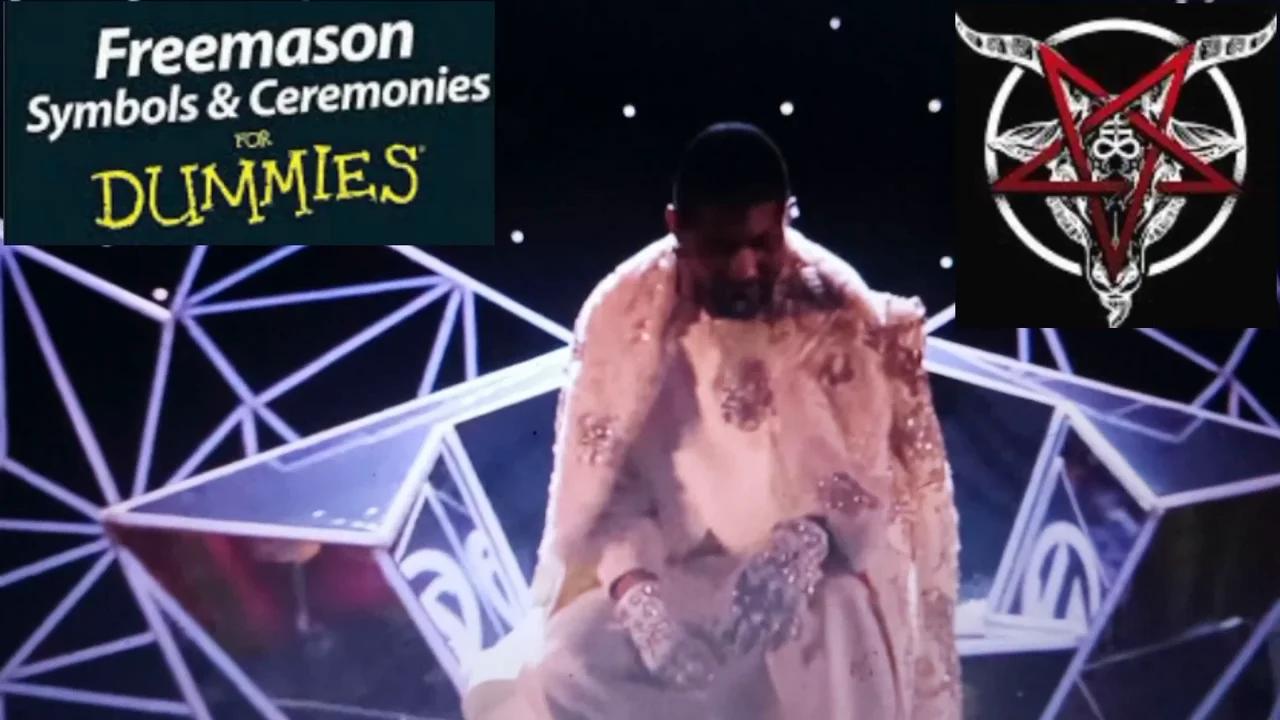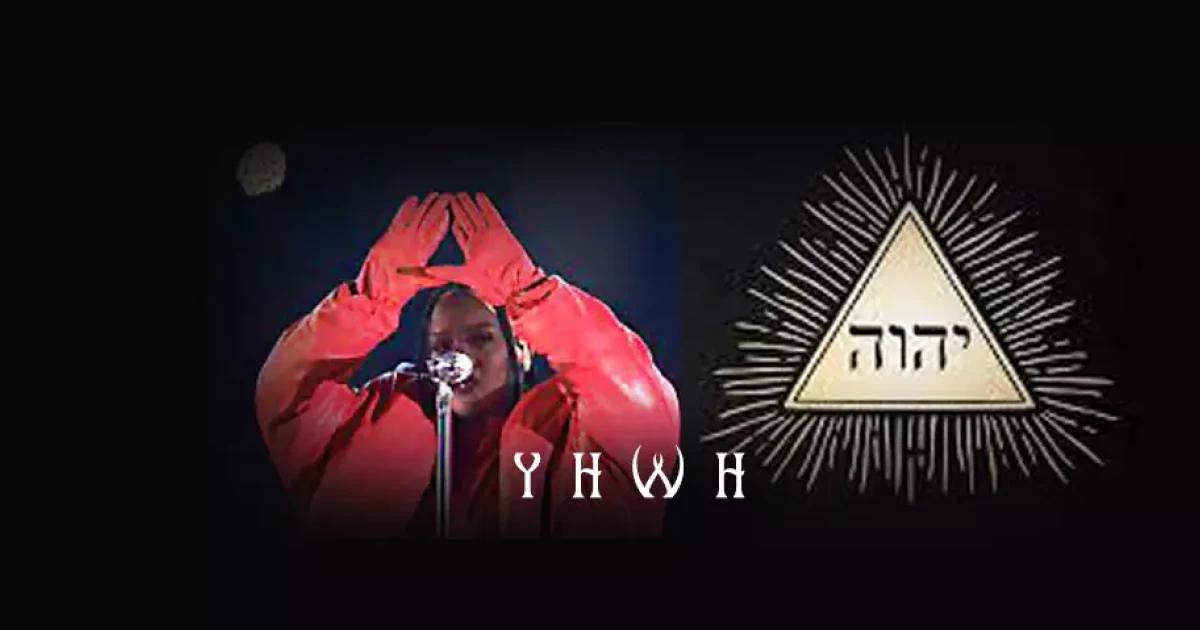Every year, the Super Bowl captures the attention of millions of viewers worldwide, but amid the excitement and fanfare, a controversial theory has emerged: the Satanic Super Bowl theory. This concept has sparked debates, fueled conspiracy discussions, and intrigued both skeptics and believers alike. What exactly is the Satanic Super Bowl, and is there any truth behind these claims? In this article, we will delve deep into the origins, evidence, and cultural impact of this urban legend.
As one of the most-watched sporting events globally, the Super Bowl is more than just a game. It is a cultural phenomenon that brings people together, blending sports, entertainment, and commerce. However, beneath its glamorous exterior, some claim that hidden agendas and occult symbolism may be at play. This article aims to separate fact from fiction and provide a comprehensive understanding of the Satanic Super Bowl theory.
Whether you are a curious observer or a skeptic looking for answers, this article will explore the roots of the controversy, examine the evidence, and analyze the cultural significance of the Satanic Super Bowl theory. Let's dive in and uncover the truth behind this fascinating topic.
Read also:Thomas Beaudoin A Comprehensive Look Into His Career Achievements And Legacy
Table of Contents
- The Origin of the Satanic Super Bowl Theory
- Occult Symbols in the Super Bowl
- Halftime Shows and Alleged Satanic Themes
- Super Bowl Advertisements: A Gateway for Hidden Messages?
- The Role of Conspiracy Theories
- Is There Any Evidence Supporting the Satanic Super Bowl Claims?
- Psychology Behind Belief in the Satanic Super Bowl
- Cultural Impact of the Satanic Super Bowl Theory
- Criticism and Skepticism
- Conclusion: What Does the Future Hold for the Satanic Super Bowl?
The Origin of the Satanic Super Bowl Theory
The Satanic Super Bowl theory first gained traction in the early 2010s, fueled by online discussions and social media platforms. At its core, the theory suggests that the Super Bowl is used as a platform to promote occult ideologies and rituals through symbolism, music, and visual cues. This belief is rooted in the idea that powerful organizations with ties to the occult may influence mainstream media and cultural events.
How Did the Theory Begin?
The origins of the Satanic Super Bowl theory can be traced back to various online forums and blogs where conspiracy enthusiasts began analyzing Super Bowl halftime shows, advertisements, and other elements for hidden meanings. Over time, these discussions gained momentum, leading to the creation of dedicated websites and YouTube channels that dissected every aspect of the event.
Some of the earliest claims focused on specific performances and advertisements, pointing to alleged references to Freemasonry, Illuminati, and other esoteric groups. While these claims often lacked concrete evidence, they resonated with individuals who already believed in broader conspiracy theories.
Occult Symbols in the Super Bowl
One of the central arguments supporting the Satanic Super Bowl theory revolves around the presence of alleged occult symbols during the event. From the field design to the halftime performances, conspiracy theorists claim that these symbols are deliberately placed to convey hidden messages.
Examples of Alleged Occult Symbols
- The Illuminati Pyramid: Some claim that the Super Bowl logo, which often features a shield-like design, resembles the all-seeing eye within a pyramid.
- Hexagonal Patterns: The field markings and stadium designs are said to incorporate hexagonal patterns, which are believed to have occult significance.
- Number Symbolism: Theorists point to specific numbers used in the Super Bowl, such as 666, which is associated with the devil in Christian tradition.
While these claims may seem compelling, it is important to note that many of these symbols can be found in various contexts throughout history, often without any sinister intent.
Halftime Shows and Alleged Satanic Themes
Perhaps the most scrutinized aspect of the Super Bowl is the halftime show, where world-renowned artists perform in front of a global audience. Conspiracy theorists often analyze these performances for alleged satanic themes, citing specific moments and visual elements as evidence.
Read also:Baby Alien Fanbus The Ultimate Guide To The Phenomenon Taking Pop Culture By Storm
Notable Performances Under Scrutiny
Performances by artists such as Beyoncé, Lady Gaga, and Madonna have been particularly controversial. For example, Beyoncé's 2016 halftime show was criticized for its apparent references to Black Panther imagery and occult symbolism. Similarly, Lady Gaga's 2017 performance featured a pyramid-shaped structure, which some interpreted as a nod to Illuminati iconography.
However, defenders of these artists argue that such interpretations are subjective and often overlook the artistic intent behind the performances. In many cases, the alleged symbolism can be attributed to creative choices rather than hidden agendas.
Super Bowl Advertisements: A Gateway for Hidden Messages?
Another area of focus for conspiracy theorists is the Super Bowl advertisements, which are infamous for their creativity and high production values. Some claim that these ads are used to subtly promote occult ideologies through subliminal messaging and symbolic imagery.
Common Allegations in Advertisements
- Subliminal Messaging: Theorists suggest that certain ads contain hidden messages or symbols that influence viewers on a subconscious level.
- Occult Imagery: Specific visuals, such as pyramids, stars, and circles, are said to have occult significance and are deliberately included in advertisements.
- Cultural Conditioning: Some argue that these ads are part of a larger effort to normalize occult themes in mainstream culture.
While these claims may seem plausible, they often lack empirical evidence and rely heavily on speculation. Advertisers, on the other hand, emphasize the importance of creativity and innovation in capturing audience attention.
The Role of Conspiracy Theories
Conspiracy theories have long been a part of popular culture, and the Satanic Super Bowl theory is just one example of how people attempt to make sense of complex or ambiguous phenomena. These theories often thrive in environments where information is abundant but unverified, leading to the spread of misinformation.
Why Do People Believe in Conspiracy Theories?
Belief in conspiracy theories can be attributed to several psychological factors, including:
- Cognitive Biases: People tend to seek patterns and connections, even when none exist, leading to the formation of unfounded beliefs.
- Information Overload: In today's digital age, the sheer volume of information available can overwhelm individuals, making it difficult to discern fact from fiction.
- Social Influence: Conspiracy theories often gain traction through social networks, where individuals reinforce each other's beliefs.
Understanding these factors can help us approach conspiracy theories with a critical mindset and encourage more informed discussions.
Is There Any Evidence Supporting the Satanic Super Bowl Claims?
Despite the widespread popularity of the Satanic Super Bowl theory, there is little to no concrete evidence to support its claims. Most of the arguments rely on subjective interpretations and speculative connections rather than verifiable facts.
Examining the Evidence
While some elements of the Super Bowl, such as its commercial nature and entertainment value, may align with broader societal trends, there is no credible evidence to suggest that the event is deliberately used to promote occult ideologies. In fact, many of the claims can be attributed to confirmation bias, where individuals selectively interpret information to fit their preexisting beliefs.
To further investigate these claims, researchers have examined historical records, production notes, and interviews with those involved in the Super Bowl's planning and execution. These investigations consistently fail to uncover any evidence of deliberate occult influence.
Psychology Behind Belief in the Satanic Super Bowl
Belief in the Satanic Super Bowl theory is not unique; it is part of a broader pattern of human psychology that seeks to explain complex phenomena through simplified narratives. By understanding the psychological mechanisms behind these beliefs, we can better appreciate why they persist and how they shape our perceptions.
Key Psychological Factors
- Cognitive Dissonance: People often experience discomfort when confronted with information that contradicts their beliefs, leading them to reject or reinterpret conflicting evidence.
- Pattern Recognition: Our brains are wired to recognize patterns, which can sometimes result in seeing connections where none exist.
- Emotional Appeal: Conspiracy theories often tap into emotions such as fear, anger, or distrust, making them more compelling and memorable.
By acknowledging these psychological factors, we can foster more rational and evidence-based discussions about topics like the Satanic Super Bowl theory.
Cultural Impact of the Satanic Super Bowl Theory
Whether true or not, the Satanic Super Bowl theory has undeniably left its mark on popular culture. It has inspired countless discussions, debates, and creative works, influencing how people perceive the Super Bowl and other large-scale events.
How Has the Theory Shaped Public Perception?
The Satanic Super Bowl theory has contributed to a growing awareness of symbolism and hidden meanings in media and entertainment. While some view this as a positive development, encouraging critical thinking and media literacy, others worry about the potential for misinformation and fear-mongering.
Ultimately, the cultural impact of the theory serves as a reminder of the power of storytelling and the importance of verifying information before accepting it as truth.
Criticism and Skepticism
Not everyone buys into the Satanic Super Bowl theory, and critics argue that it lacks credibility and relies on unfounded assumptions. Skeptics point out that many of the claims can be explained by coincidence, artistic expression, or cultural influences.
Common Criticisms
- Lack of Evidence: Critics emphasize the absence of concrete evidence supporting the theory, highlighting the dangers of drawing conclusions based on speculation.
- Overinterpretation: Skeptics argue that many of the alleged symbols and themes can be attributed to overinterpretation and selective observation.
- Cultural Context: They also stress the importance of considering cultural and historical context when analyzing media and entertainment.
By engaging with these criticisms, we can develop a more balanced and informed perspective on the Satanic Super Bowl theory.
Conclusion: What Does the Future Hold for the Satanic Super Bowl?
In conclusion, the Satanic Super Bowl theory remains a fascinating and controversial topic that continues to captivate audiences worldwide. While there is little evidence to support its claims, the theory highlights the enduring human tendency to seek meaning and patterns in the world around us.
As we move forward, it is essential to approach such theories with a critical mindset, balancing skepticism with open-mindedness. We encourage readers to explore the topic further, engage in thoughtful discussions, and share their insights with others. By doing so, we can contribute to a more informed and nuanced understanding of the Satanic Super Bowl and its place in popular culture.
Thank you for reading this article. We invite you to leave your thoughts in the comments section below, share this article with your friends, and explore other topics on our website. Together, let's continue the conversation and uncover the truth behind the world's most intriguing mysteries.


